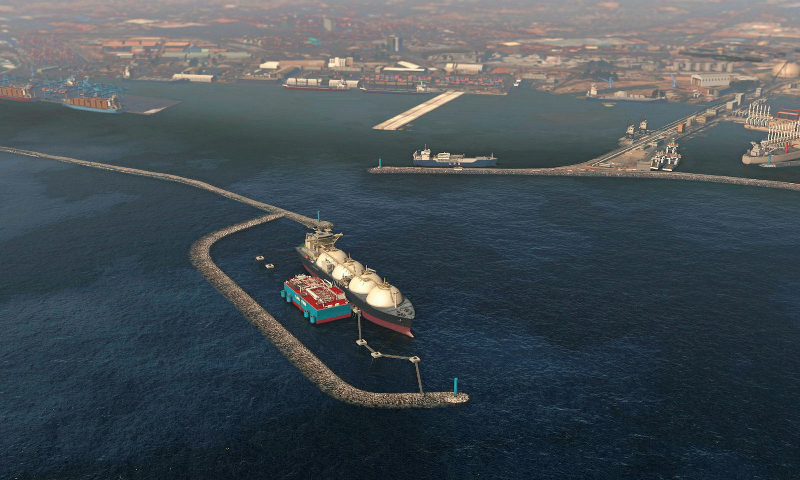
While accounting for roughly eight percent of global oil production in 2020, Africa is home to massive untapped natural resource wealth, with a view to becoming a global energy powerhouse. Between 2021 and 2025, an estimated 428 oil and gas projects are expected to start operations on the continent, which is set to become a hive of activity over the next decade. Indispensable to economic and social development, Africa’s rich endowment of oil and gas resources are projected to catalyze growth across the continent, accounting for 7.1% of global proven oil and gas reserves.
TANZANIA LNG LIQUEFACTION PLANT
Led by Shell, the $30-billion Tanzania Liquefied Natural Gas (LNG) Liquefaction Project, also known as the Likong’o-Mchinga LNG Project, is expected to commence construction in 2023, with completion aimed for 2028. The LNG export terminal will be built at Lindi in the southern part of the country, and will have the capacity to produce 10 million tons of LNG per year. The megaproject will be the first and most expensive LNG project in Tanzania, which holds estimated recoverable resources of 57.5 trillion cubic feet of natural gas, of which 49.5 trillion cubic feet is located offshore. The facility will comprise up to five trains, each with a capacity of producing five million tons of LNG per year.
ROVUMA LNG
With FID on the project expected by 2023, the $30-billion Rovuma LNG Terminal is set to begin production in 2025. Located approximately 40km off the Cabo Delgado coast in northern Mozambique, the Rovuma LNG project is based on three gas reservoirs in the Area 4 Block of the Rovuma Basin, which contain an estimated 85 trillion cubic feet of natural gas. ExxonMobil is leading the construction and operation of the facility, which is set to promote skills development and create over 5,000 local job opportunities. As one of the largest projects in Africa, the Rovuma LNG facility has a planned capacity of 15.2 million tons of LNG per year and is expected to transform the country’s natural gas industry over the next decade. The project’s initial phase will develop the Mamba reservoirs in Area 4, and will see the construction of two onshore trains, each with a capacity of 7.6 million tons of LNG per year.
MOZAMBIQUE LNG
Currently under construction on the Afungi Peninsula in the Cabo Delgado Province, the inception of the Mozambique LNG facility began with the discovery of vast quantities of natural gas off the country’s northern coast in 2010, which led to a $20-billion FID on the project in 2019. The large-scale development will tap into an estimated 75 trillion cubic feet of recoverable natural gas from Mozambique’s Offshore Area 1, and utilize a two-train liquefaction plant with a capacity of 12.9 million tons per year to deliver LNG and start production by 2024. Similar to the Rovuma LNG project, Mozambique LNG is expected to shape the country’s economic future by supporting socioeconomic development, delivering positive environmental and social projects and providing thousands of jobs over several years.
OGIDIGBEN GAS REVOLUTION INDUSTRIAL PARK
Fully owned by the Nigerian National Petroleum Corporation, the $20-billion Ogidigben Gas Revolution Industrial Park is a planned downstream refinery and petrochemical complex set for construction in Nigeria’s Delta Region. Covering over 27 km2, the industrial park is planned to feature fertilizer, methanol, petrochemical and aluminum plants to make use of Nigeria’s abundant natural gas volumes as feedstock, and is estimated to create over 250,000 direct and indirect jobs. The project aims to tap into 18 trillion cubic feet of proven natural gas reserves located in the nearby Odidi, Okan and Forcados fields, with gas further supplied by the country’s dominant gas pipeline network, the Escravos-Lagos Pipeline System.
ZABAZABA AND ETAN INTEGRATED DEVELOPMENT
In water depths ranging between 1,200m and 2,400m, the Etan and Zabazaba oil fields are located in OPL 245 offshore Nigeria in the Niger Delta. The 300,000-km2 delta is the world’s twelfth-largest oil and gas resource, estimated to contain 34.5 billion barrels of oil and 93.8 trillion cubic feet of proven natural gas reserves. Together, the Zabazaba and Etan Fields are estimated to contain a combined 560 million barrels of oil equivalent. The $13.5-billion integrated development project is being undertaken by the Shell Nigeria Exploration and Production Company, Eni and Nigerian Agip Exploration – the last of which will serve as operator for the project. Expected to support small- and medium-sized businesses in Nigeria, half of the Zabazaba topside is slated for integration into the country. The Zabazaba floating production storage and offloading unit will tap into both fields and will be spread-moored with a capacity of 120,000 barrels of oil per day.
Source: AECP
Join our mailing list here


